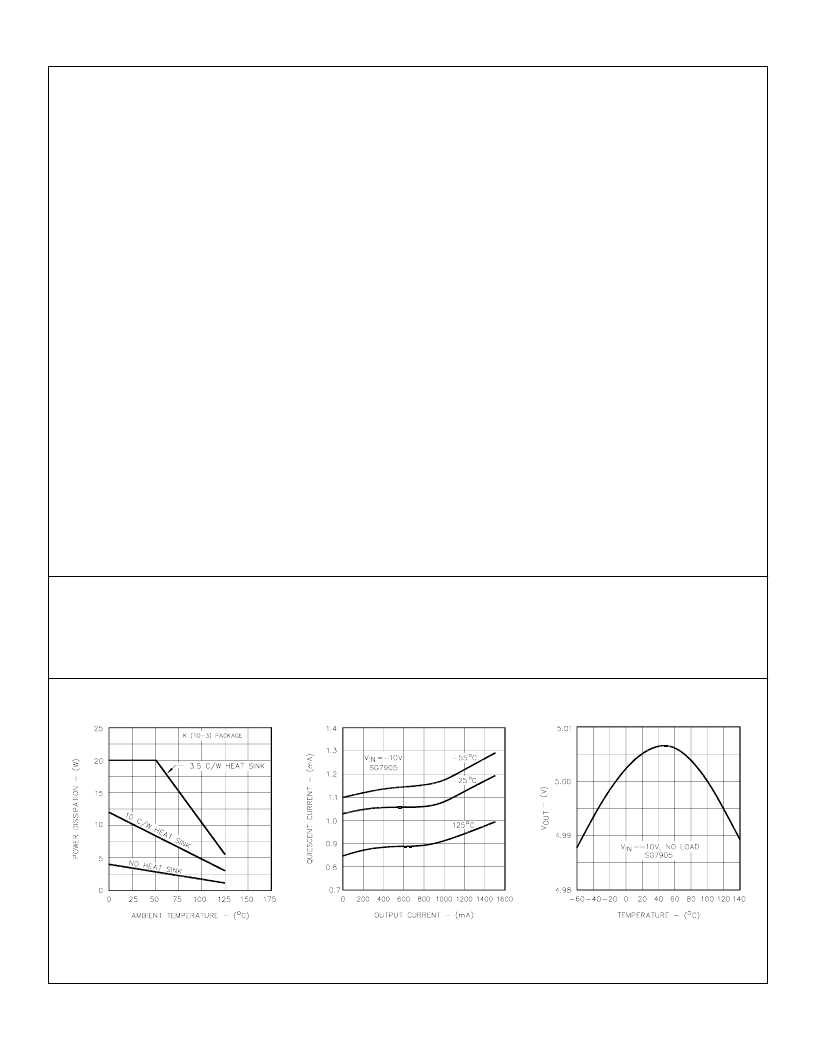- 您現(xiàn)在的位置:買賣IC網(wǎng) > PDF目錄376344 > SG120-5K (Microsemi Corporation) NEGATIVE FIXED VOLTAGE REGULATOR PDF資料下載
參數(shù)資料
| 型號(hào): | SG120-5K |
| 廠商: | Microsemi Corporation |
| 英文描述: | NEGATIVE FIXED VOLTAGE REGULATOR |
| 中文描述: | 負(fù)固定電壓調(diào)節(jié)器 |
| 文件頁(yè)數(shù): | 2/8頁(yè) |
| 文件大?。?/td> | 167K |
| 代理商: | SG120-5K |

SG120
11/91 Rev 1.4 6/97
Copyright
1997
L
IN
F
IN
ITY
Microelectronics Inc.
Garden
Grove,
FAX: (714) 893-2570
11861 Western Avenue
∞
CA
92841
2
(714) 898-8121
∞
ABSOLUTE MAXIMUM RATINGS
(Note 1)
NEGATIVE REGULATOR
-65
°
C to 150
°
C
300
°
C
Operating Junction Temperature
Hermetic (K, R, IG - Packages) ...................................
Storage Temperature Range ...........................
Lead Temperature (Soldering, 10 Seconds) .................
FIGURE 1.
MAXIMUM AVERAGE POWER DISSIPATION
FIGURE 2.
QUIESCENT CURRENT VS. LOAD
FIGURE 3.
TEMPERATURE COEFFICIENT
Device
Input Voltage Differential
(Output shorted to ground)
35V
35V
35V
35V
35V
35V
35V
Output Voltage
-5V
-5.2V
-8V
-12V
-15V
-18V
-20V
Input Voltage
-35V
-35V
-35V
-35V
-40V
-40V
-40V
150
°
C
Note 1. Values beyond which damage may occur.
Operating Junction Temperature Range:
SG120 ...........................................................
RECOMMENDED OPERATING CONDITIONS
(Note 2)
CHARACTERISTIC CURVES
-55
°
C to 150
°
C
Note 2. Range over which the device is functional.
THERMAL DATA
K Package:
Thermal Resistance-
Junction to Case
,
θ
JC
................. 3.0°C/W
Thermal Resistance-
Junction to Ambient
,
θ
JA
............... 35°C/W
R Package:
Thermal Resistance-
Junction to Case
,
θ
JC
................. 5.0°C/W
Thermal Resistance-
Junction to Ambient
,
θ
JA
.............. 40°C/W
T Package:
Thermal Resistance-
Junction to Case
,
θ
JC
.................. 15°C/W
Thermal Resistance-
Junction to Ambient
,
θ
JA
............ 120°C/W
IG Package:
Thermal Resistance-
Junction to Case
,
θ
JC
................. 3.5°C/W
Thermal Resistance-
Junction to Ambient
,
θ
JA
.............. 42°C/W
L Package:
Thermal Resistance-
Junction to Case
,
θ
JC
.................. 35°C/W
Thermal Resistance-
Junction to Ambient
,
θ
JA
............ 120°C/W
Note A. Junction Temperature Calculation: T
= T
+ (P
x
θ
).
Note B. The above numbers for
θ
are maximums for the limiting thermal
resistance of the package in a standard mounting configuration.
The
θ
numbers are meant to be guidelines for the thermal
performance of the device/pc-board system. All of the above
assume no ambient airflow.
相關(guān)PDF資料 |
PDF描述 |
|---|---|
| SG120-5L | NEGATIVE FIXED VOLTAGE REGULATOR |
| SG120-5T | NEGATIVE FIXED VOLTAGE REGULATOR |
| SG120-8IG | NEGATIVE FIXED VOLTAGE REGULATOR |
| SG120-8K | NEGATIVE FIXED VOLTAGE REGULATOR |
| SG120-8L | NEGATIVE FIXED VOLTAGE REGULATOR |
相關(guān)代理商/技術(shù)參數(shù) |
參數(shù)描述 |
|---|---|
| SG120-5K/883B | 制造商:MICROSEMI 制造商全稱:Microsemi Corporation 功能描述:NEGATIVE FIXED VOLTAGE REGULATOR |
| SG120-5L | 制造商:MICROSEMI 制造商全稱:Microsemi Corporation 功能描述:NEGATIVE FIXED VOLTAGE REGULATOR |
| SG120-5L/883B | 制造商:MICROSEMI 制造商全稱:Microsemi Corporation 功能描述:NEGATIVE FIXED VOLTAGE REGULATOR |
| SG120-5R | 制造商:MICROSEMI 制造商全稱:Microsemi Corporation 功能描述:NEGATIVE FIXED VOLTAGE REGULATOR |
| SG120-5R/883B | 制造商:MICROSEMI 制造商全稱:Microsemi Corporation 功能描述:NEGATIVE FIXED VOLTAGE REGULATOR |
發(fā)布緊急采購(gòu),3分鐘左右您將得到回復(fù)。